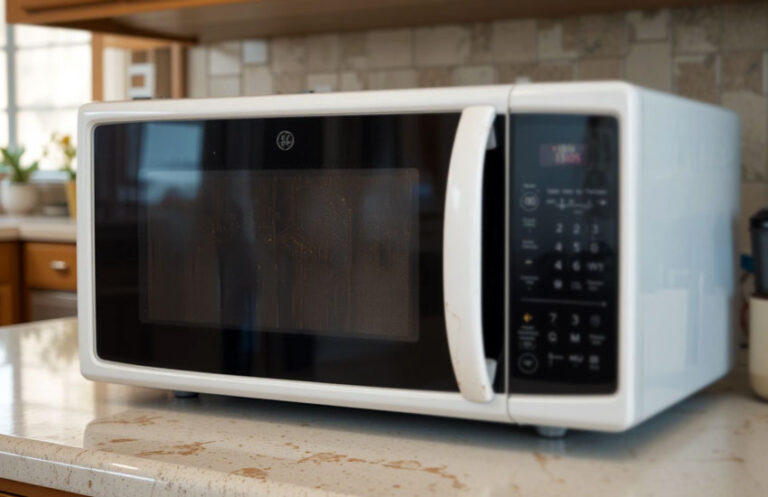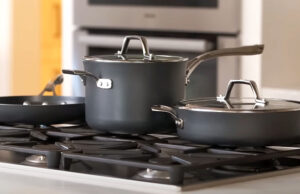Are you in the middle of cooking, and suddenly realize you don’t have a roasting pan? Don’t panic! There are plenty of kitchen items you can use instead. Whether you’re roasting a turkey, veggies, or a beautiful piece of meat, you can still achieve the same crispy, delicious results with a few common kitchen alternatives. This guide will show you what you can use and how to get the best results with each option.
Use a Baking Sheet
If you’re roasting something small or just want an alternative to a roasting pan, a baking sheet can be your best friend. It’s flat and spacious, allowing heat to circulate around your food, making it perfect for roasting. A regular baking sheet is often wider than a roasting pan, so it gives a great chance for your food to crisp up nicely.
A major benefit of using a baking sheet is that it’s shallow, which means that any drippings or fat from your meat will run off easily. This can be perfect if you want to make a quick gravy or just avoid a greasy roast. Plus, cleanup is typically a breeze since the food can be placed directly on parchment paper or aluminum foil.
Here’s what makes a baking sheet a good choice for roasting:
- Shallow Depth: This allows for even cooking.
- Size Variety: Available in multiple sizes to fit what you’re cooking.
- Easy Cleanup: Line it with foil or parchment for less mess.
For large items, like a turkey, a baking sheet may be too small. In those cases, try combining two baking sheets together, or use one that’s extra large. Also, make sure your food fits comfortably on the sheet without overcrowding, as this can lead to uneven cooking.
Use a Cast Iron Skillet
A cast iron skillet is another fantastic alternative to a roasting pan. This heavy-duty cookware can go straight from the stovetop to the oven, which makes it super versatile. Cast iron skillets are known for their ability to hold heat well, making them excellent for even cooking.
When using a cast iron skillet to roast, remember that its edges can be higher than a regular baking sheet, which helps keep juices in place while roasting. It also gives your meat a nice crisp texture. This is especially great if you’re cooking something like a roast chicken or pork loin.
Benefits of using a cast iron skillet include:
- Even Heat Distribution: Ensures your food is roasted perfectly.
- High Sides: Prevents juices from splattering all over.
- Versatile: Can be used on the stovetop and in the oven.
The main thing to keep in mind is the size of the skillet. Cast iron skillets come in various sizes, and larger cuts of meat may not fit in a smaller pan. If you have a large enough skillet, it’s an excellent choice for roasting.
Use a Casserole Dish
If you have a casserole dish in your kitchen, it can double as a great roasting pan alternative. These dishes are typically made of glass or ceramic, and they hold heat well. Because they are deeper than a baking sheet, a casserole dish is perfect for roasting dishes that involve liquid, like a roasted chicken with vegetables or a baked pasta dish.
One great advantage of using a casserole dish is that it’s often designed with a lid, which can be useful for certain roasts. For example, you can cover the casserole dish during the initial roasting phase and uncover it towards the end to allow the food to crisp up. The lid also helps to keep your food moist, which is ideal for dishes like pot roasts.
Here are the advantages of using a casserole dish for roasting:
- Deep and Spacious: Holds liquids and juices well.
- Lid Option: Helps retain moisture and flavor.
- Perfect for Roasting with Veggies: You can cook meat and veggies together in one dish.
Keep in mind that casserole dishes are typically smaller than large roasting pans, so they’re better suited for smaller roasts or dishes. Also, check if the casserole dish is oven-safe before using it at high temperatures.
Use a Dutch Oven
A Dutch oven is another great option for roasting, especially if you want to cook something like a large roast, chicken, or even a stew. Dutch ovens are made from heavy materials like cast iron, and they come with tight-fitting lids, which means they are fantastic for locking in moisture. This is especially beneficial when roasting tougher cuts of meat that need long cooking times to become tender.
The versatility of Dutch ovens is another reason why they make a good roasting pan alternative. They can go straight from stovetop to oven, and their sturdy construction helps to create even heat distribution, ensuring your food cooks evenly.
What makes Dutch ovens stand out:
- Great Heat Retention: Ideal for slow-roasting and braising.
- Lid for Moisture: Helps to lock in flavors and juices.
- Versatile: Can be used for many types of cooking, from roasting to baking.
While Dutch ovens are wonderful for many kinds of cooking, they do have their limits in size. If you’re roasting a big turkey, you might need to consider another alternative unless you have a very large Dutch oven. Also, these pots can be quite heavy, so be prepared for some weight when handling them.
I hope this article helped you find some great alternatives to a traditional roasting pan. Whether you’re using a baking sheet, a cast iron skillet, a casserole dish, or a Dutch oven, you’ll be able to roast your food perfectly with the right tools. Remember, the key is to choose an option that fits your recipe and allows for good heat circulation. Happy cooking!
Frequently Asked Questions
Is it okay to use a baking sheet instead of a roasting pan?
Yes, a baking sheet can work well for roasting smaller items like vegetables or meats, as long as there’s enough space for even heat distribution.
Can I use a casserole dish for roasting meat?
Absolutely! A casserole dish works great for roasting meat, especially if you want to include vegetables and liquids like broth or wine.
Do I need to cover the food when using a Dutch oven?
While it’s not necessary, covering your food with the lid of a Dutch oven can help trap moisture, especially for slow-roasting tougher cuts of meat.
Is it better to roast in a cast iron skillet or a roasting pan?
It depends on your recipe! A cast iron skillet can give a nice, crispy finish, while a roasting pan is ideal for larger cuts and when you need more space.
Can I use a regular pan for roasting vegetables?
Yes, you can use a regular pan, like a sauté pan or even a cake pan, to roast vegetables. Just make sure they have enough room for air to circulate.
Is it safe to roast in a glass baking dish?
Yes, glass baking dishes are safe for roasting, especially for smaller roasts and items like chicken or vegetables. Just be cautious with extreme temperature changes to avoid breaking the glass.
Do I need a roasting pan for a turkey?
While a traditional roasting pan works best for a large turkey, you can use a baking sheet or Dutch oven as a substitute, especially if your turkey fits.
Can I use aluminum foil to line a pan for roasting?
Yes, lining a pan with aluminum foil can make cleanup easier and can help prevent sticking. Just ensure the foil doesn’t interfere with the heat circulation.




